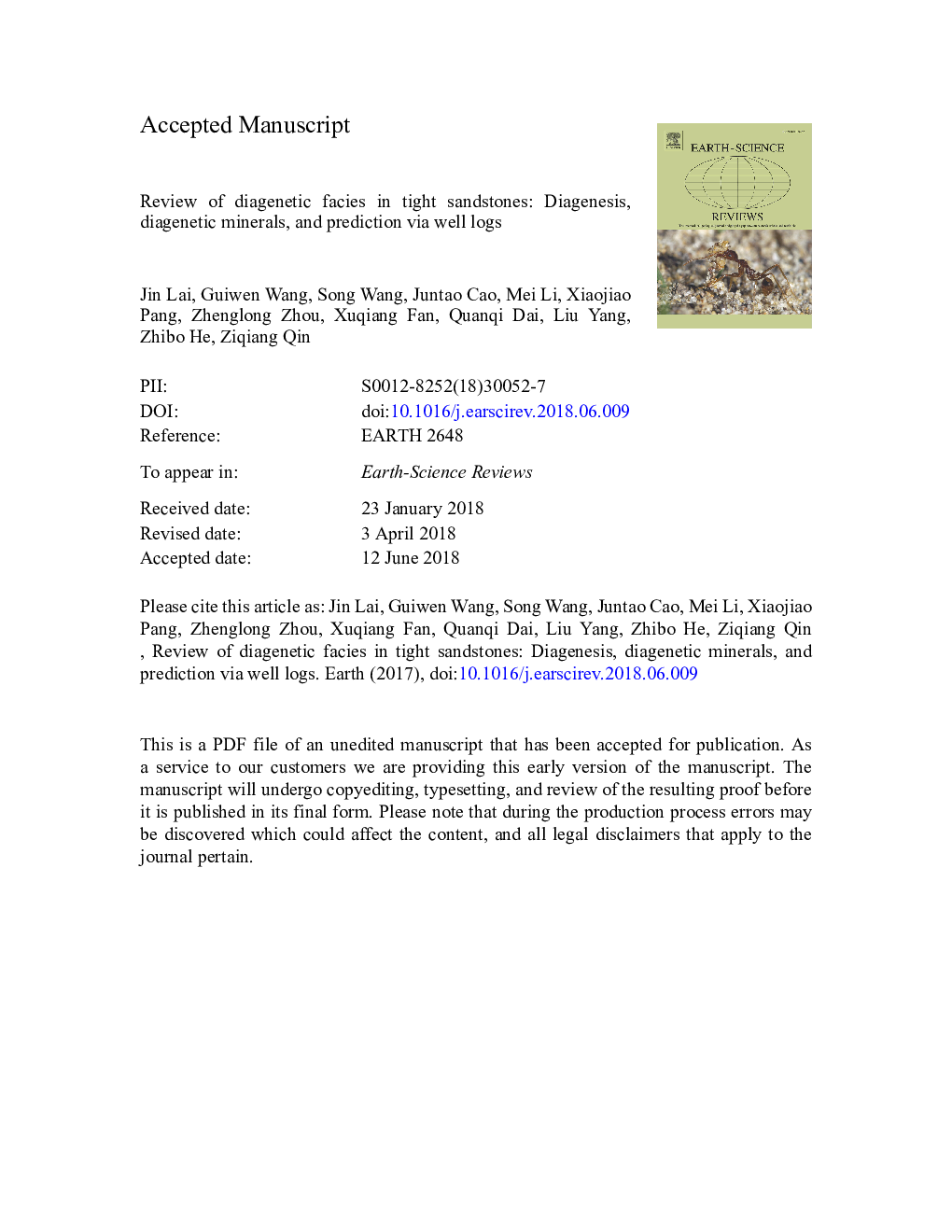| کد مقاله | کد نشریه | سال انتشار | مقاله انگلیسی | نسخه تمام متن |
|---|---|---|---|---|
| 8912880 | 1639918 | 2018 | 79 صفحه PDF | دانلود رایگان |
عنوان انگلیسی مقاله ISI
Review of diagenetic facies in tight sandstones: Diagenesis, diagenetic minerals, and prediction via well logs
ترجمه فارسی عنوان
بررسی رخساره های دیگنتیک در ماسه سنگ تنگ: دیگنز، مواد معدنی دیگنتیک و پیش بینی آن از طریق حفره های خوب
دانلود مقاله + سفارش ترجمه
دانلود مقاله ISI انگلیسی
رایگان برای ایرانیان
کلمات کلیدی
ماسه سنگ، رخساره های دیگنتیک، سیاه چاله ها، تشخیص، مواد معدنی دیگنتیک، کیفیت مخزن،
موضوعات مرتبط
مهندسی و علوم پایه
علوم زمین و سیارات
زمین شناسی
چکیده انگلیسی
The tight sandstones are characterized by low porosity, low permeability, complex pore structure and strong heterogeneity due to the extensive diagenetic modifications they experienced. Understanding of the impact of diagenetic alterations on reservoir quality is crucial to the hydrocarbon exploration and production in tight sandstones. Diagenetic facies, which is the comprehensive description of the diagenesis and diagenetic minerals, determines the formation and distribution of sweet spot. By correlating the diagenetic facies to well log responses, the subsurface distribution of porosity and permeability can be predicted. However, the prediction of diagenetic facies and reservoir quality via well logs in tight sandstones remains a challenging task. This paper critically reviews the impact of diagenesis and diagenetic minerals on reservoir quality in tight sandstones, and establishes a model for prediction of diagenetic facies via well logs, as assessed from peer reviewed papers in the literature as well as from the authors' personal experiences. This review begins with reviewing the impacts of compaction, cementation, dissolution and various types of diagenetic minerals on reservoir quality evolution. The definition and classification schemes of diagenetic facies are then discussed, and the reservoir quality as well as diagenetic evolution sequence of various diagenetic facies is summarized. The same diagenetic facies commonly display similar compositional and textural attributes, matrix and cement, as well as porosity systems. The well log responses (GR, AC, DEN, CNL, and RT) of various diagenetic facies are summarized by the calibration of log values with cores and related thin sections. By translating the diagenetic facies to conventional well logs, a predictable model, which can be used for subsurface reservoir quality prediction, is established. Then the theory of ECS logs is reviewed, and the application of ECS logs in diagenetic facies evaluation is discussed. At last, the quantitative characterization for various type and degree of diagenesis is reviewed, and the subsurface diagenetic facies is predicted by quantitative calculation of the compactional porosity loss, cementational porosity loss and dissolution porosity content via well logs. Correlating the diagenetic facies to well logs provides a powerful tool to predict the distribution of high quality reservoirs in tight sandstones. This review will provide insights into the reservoir quality evaluation and sweet spot prediction via well logs in tight sandstones.
ناشر
Database: Elsevier - ScienceDirect (ساینس دایرکت)
Journal: Earth-Science Reviews - Volume 185, October 2018, Pages 234-258
Journal: Earth-Science Reviews - Volume 185, October 2018, Pages 234-258
نویسندگان
Jin Lai, Guiwen Wang, Song Wang, Juntao Cao, Mei Li, Xiaojiao Pang, Zhenglong Zhou, Xuqiang Fan, Quanqi Dai, Liu Yang, Zhibo He, Ziqiang Qin,
